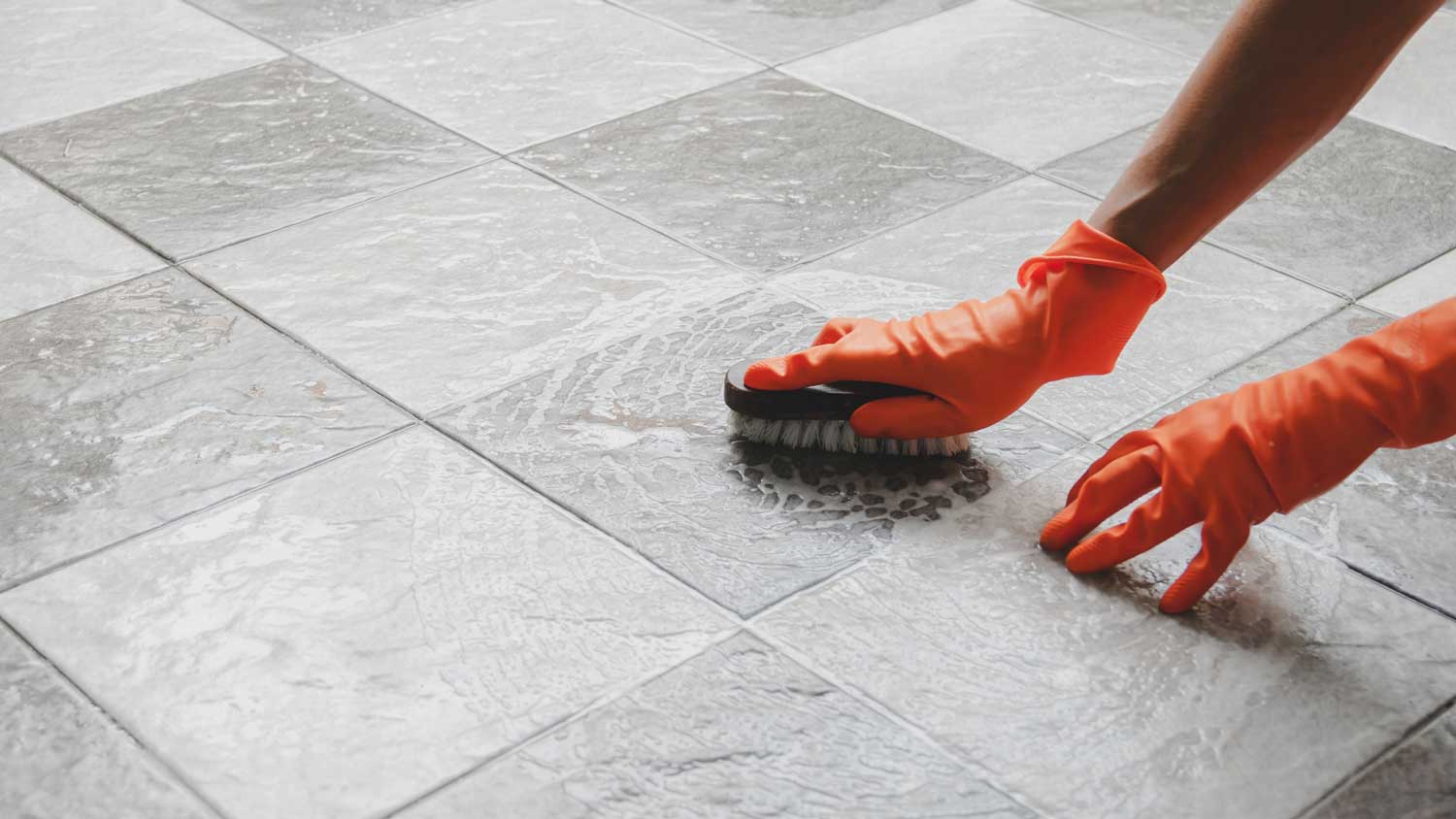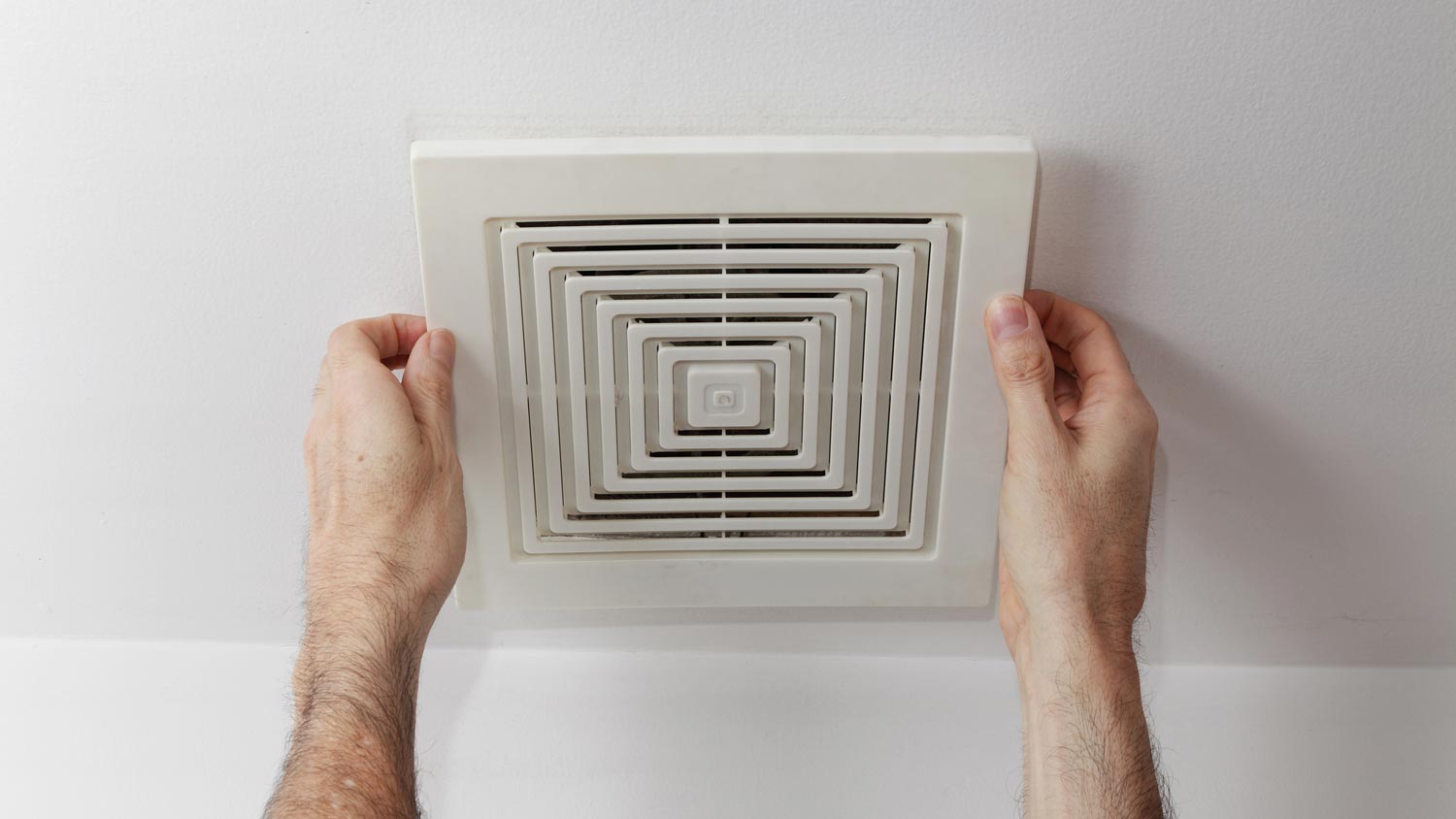
Crawl space repair costs can seem intimidating, but putting them off can lead to bigger issues. Learn about repair costs in this guide to set your budget.
Musty odors usually indicate a moisture issue, so removing moisture is the best solution


Basements can add a ton of value to your home, not to mention usable space for living or entertaining guests. Unfortunately, they’re also prone to moisture buildup that result in musty odors, making the space unpleasant and—in some cases—uninhabitable. In this guide, we’ll explain how to get rid of musty smells in your basement for good and how to prevent them from returning in the future.
Musty odors are a sign of moisture, which leads to mold growth, so while the underlying cause of your moisture issue can vary, the reason for the odor is the presence of moisture and mold or mildew.
Basements and crawl spaces are prone to musty odors because they sit underground, and the concrete that makes up the floor and foundation walls can allow moisture from the ground in through cracks or through the pores in the building material. That, in turn, leads to increased humidity in the space, which creates an area that’s more conducive to mold growth.
There are many underlying problems that can lead to water intrusion and, consequently, musty odors in your basement:
Leaks through foundation cracks
Moisture wicking through the concrete
Poor drainage around the foundation
Interior plumbing leaks
Moisture from basement bathrooms
According to data from Angi, the most common foundation problem is basement flooding, making up around 29% of reported issues. Another 20% of homeowners reported issues with excessive dampness, while 15% mentioned problems with mold, mildew, and fungus. Take a look at the chart below to see how the most common foundation problems break down.

Before you get ready to start fixing your moisture issues and getting rid of those musty odors, there are a few things we recommend you do to make sure you carry out the best possible solution to your issue.
Your first step should be to carry out a basement inspection to identify the source of the moisture, as this will help you come up with a plan to fix the issue and get rid of those musty odors.
If you have plumbing running through your basement, check around any fixtures and pipes for signs of water-damaged building materials and mold growth. In addition to visible mold in your crawl space or basement, look for water stains, warped drywall, and rotted wood building materials. Pooling or dripping water can also be a clear indication of the source of the issue.
Next, check your foundation for signs of leaking. Inspect the walls and floors for cracks wider than 1/8 inch, cracks that have wet spots around them, and efflorescence on the walls, which is a buildup of minerals left behind when the groundwater wicks in and evaporates.
Once you know where the water or moisture is coming from, you can come up with a plan based on the best solution for your particular issue.
| Underlying Issue | Possible Solutions |
|---|---|
| Foundation crack leak | Foundation crack sealing, grading soil, foundation drainage system, gutter system |
| Moisture wicking through concrete | Foundation waterproofing, foundation drainage system, gutter system, soil grading |
| Plumbing leak | Plumbing repair, replace damaged materials |
Your last step before you dive in and carry out the solution is to come up with a plan. Ideally, you want to address the underlying issue in addition to removing any building material that might be holding moisture or serving as a breeding ground for mold. Your plan will vary based on the underlying cause of the moisture accumulation and the water damage in your basement. We recommend considering the following steps:
Repair leaking pipes.
Install an exhaust fan in the basement bathroom.
Install a foundation drainage system.
Grade soil away from your foundation.
Install gutters, leaders, and gutter extenders.
Remove or replace damaged building materials.
Install a self-draining dehumidifier.

There are a few things you can do to get rid of musty odors in your basement, depending on what you found to be the underlying cause of the moisture issue.
Your first order of business should be to remove any building materials that experienced water damage or have visible mold growth on them.
Pull out and replace the damaged drywall.
Tear up carpets that look or smell moldy.
Remove insulation where you have a plumbing leak or foundation moisture getting in.
Hire a foundation specialist to remove damaged beams, joists, or studs.
Remove fabric couches that look or smell moldy. You can try spot-cleaning them if there’s minimal mold growth.
Remove cardboard boxes and other storage items that can hold odors.
Wash any clothing stored in the basement with hot water and relocate it upstairs.
If just removing visibly damaged materials isn’t enough, you might need to treat affected building material with a bleach solution.
Mix 1/2 cup to 1 cup of bleach with 1 gallon of water.
Put on rubber gloves, and apply the solution to any affected building materials using a sponge or rag. This can include floor joists, beams, wall studs, flooring, and even drywall. Your goal is to kill the mold, not scrub off the visible spores.
Let the area air-dry or set up a fan to expedite the process.
Even after you kill mold and remove moldy materials in your basement, you might have a lingering musty odor. Luckily, it’s usually pretty easy to neutralize.
Place a few bowls of baking soda around the basement area to absorb lingering odors. Replace them after a week or so if the smells haven’t dissipated.
Install air fresheners in the basement. It’s important not to use air fresheners alone to cover up odors, but they can be a great option to couple with the previous steps.
Use an odor eliminator designed for fabric on any installed carpeting or area rugs you intend to keep that weren’t directly affected by mold.
If you’ve tried the options above and still have an unwanted odor sticking around, consider setting up an air scrubber temporarily.
Purchase an industrial air scrubber or rent one from your local home improvement store.
Plug the air scrubber in and set it up in the largest section of your basement.
Open any interior doors to other rooms in your basement and prop them open.
Turn the air scrubber on and let it run for 48 hours.

Removing existing odors from your basement is only half the battle, so you’ll need to take additional steps to make sure the moisture problem that caused the odors in the first place is also addressed. There are a handful of things you can do, depending on the underlying issue.
If your issue resulted from an interior plumbing leak, even if it was a minor one, have a plumber come in and repair the leak. If you don’t, the musty odor will just continue to come back and get worse over time.
If your problem is related to your foundation leaking after rain, one of the best things you can do is install gutters, leaders, and gutter extenders. A gutter system will take runoff from your roof and move it away from your foundation, meaning it won’t get the opportunity to wick through the concrete or seep through foundation cracks.
We recommend having a professional install your gutters and leaders, but putting in gutter extenders can be a super-simple DIY project that takes just a few minutes.
You can use a shovel and an iron rake to create a gradient away from your foundation and make a natural pathway for runoff to travel away from your home. The optimal slope is about 1 vertical inch per foot for 5 to 10 feet around the perimeter of your home.
Basement waterproofing is a combination of different methods for reducing the risk of water coming in contact with your foundation, decreasing the concrete’s permeability, and removing water quickly once it makes its way inside. We suggest hiring a basement waterproofing company near you to help you come up with the best combination of these strategies for your specific home and moisture issues:
Waterproof paint
Dampproofing (requires paying for the cost to dig out a basement perimeter)
French drain
Footing drain
Sump pump
Basement floor drain
Self-draining dehumidifier
Groundwater can soak in through cracks in your foundation and lead to ongoing moisture issues under your home, so sealing those cracks can sometimes solve the underlying problem.
You can safely seal hairline cracks from the foundation settling using a foundation crack sealant. If you have leaks from cracks that could indicate structural damage and necessitate foundation repair costs, we recommend hiring a foundation professional to repair the crack, fix any structural damage, and then seal it properly.
If your moisture issue is a result of humidity from a shower in your basement bathroom, you can install an exhaust fan that vents outside to remove the humid air. We suggest hiring a professional to install your exhaust fan, as it requires cutting through the building material to the exterior of your home, which can be dangerous and lead to additional moisture issues.
Musty odors in your basement can be pervasive and recurring, so it might be tempting to hire a professional to get rid of them right away. While that’s usually the fastest solution, you can save some money by doing some of the work yourself.
| For Beginner DIYers | Usually Requires Professional Help |
|---|---|
| Finding source of the moisture | Fixing plumbing leaks |
| Grading soil away from foundation | Installing a French drain |
| Installing a self-draining dehumidifier | Installing a bathroom exhaust fan |
| Installing an air scrubber | Installing a basement floor drain |
| Removing water-damaged materials | Installing a gutter system |
| Sealing hairline foundation cracks | Sealing wide or uneven foundation cracks |
| Setting up baking soda or air fresheners | Installing a sump pump |
| Treating surface mold | Installing a footing drain |
Some of the things listed for professionals in the table above can be suitable for experienced DIYers, like installing a French drain or gutter system. But we recommend leaving them to the pros unless you’re confident in your DIY abilities.
From average costs to expert advice, get all the answers you need to get your job done.

Crawl space repair costs can seem intimidating, but putting them off can lead to bigger issues. Learn about repair costs in this guide to set your budget.

Sump pump battery backup costs depend on the type and the design of the system purchased. Follow this guide to learn how to budget for your backup battery.

Discover how much sump pump installation costs, including average prices, key cost factors, and tips to save on your basement waterproofing project.

A flooded basement can lead to lasting structural issues in your home. Discover what causes basement flooding and how to address the issue.

From deep cleaning to major repairs, learn how to hire a crawl space contractor to get the job done right. Here are the steps to finding the best crawl space professional.

Crawl space encapsulation can make a big difference if you’re experiencing issues with mold, mildew, and pests. Here’s what you need to know.